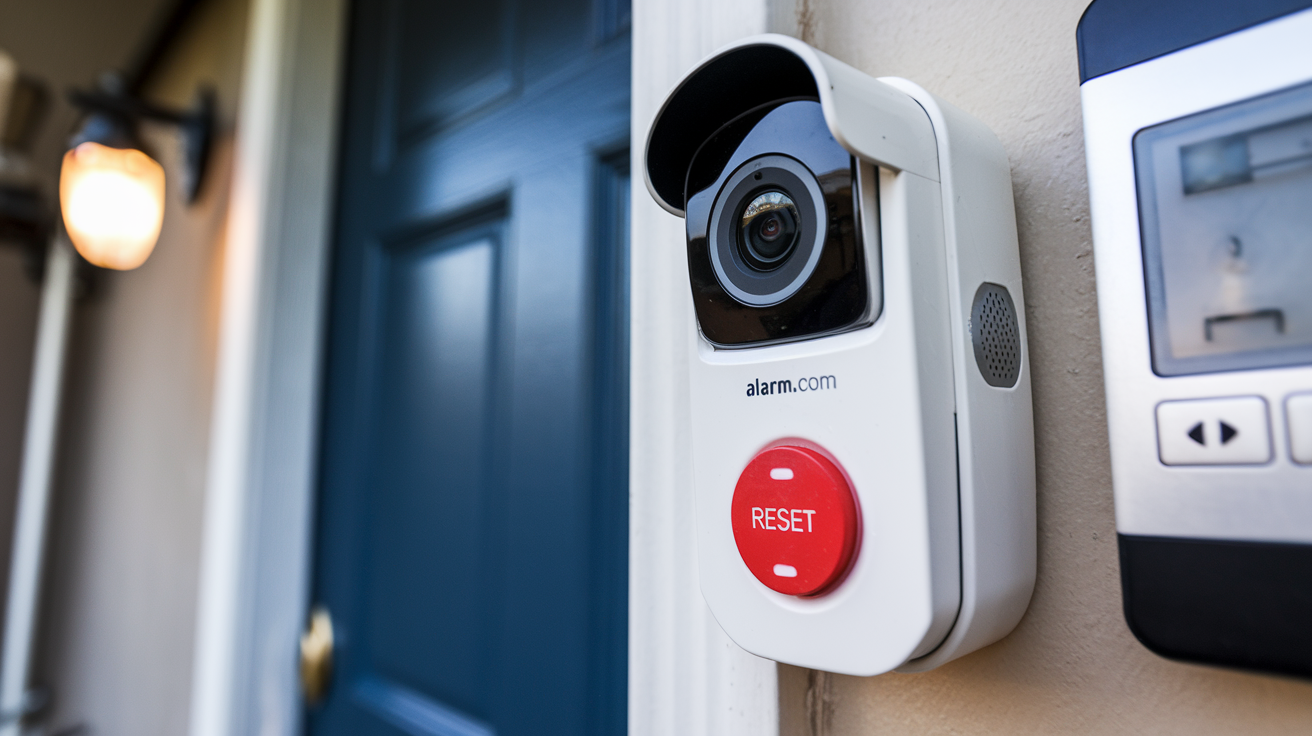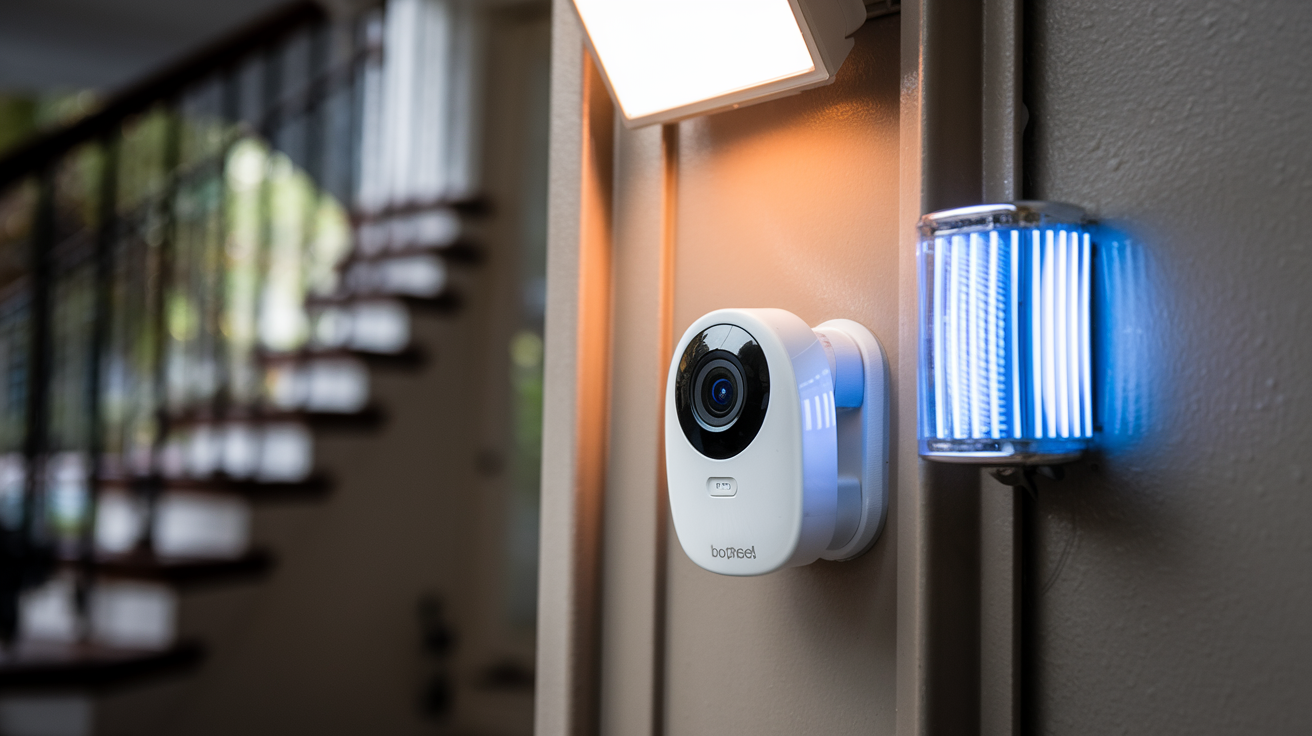A fire alarm sounding in one’s house is unpleasant and upsetting, especially if it is false. Fire alarms are used to prevent fire outbreaks, but you would not wish to have the alarm ringing in your house when there is no fire or smoke. Below are detailed procedures showing how various home fire alarms can be switched off temporarily.
Smoke Detector Alarms There are several types of fire alarms, but the most popular one is the smoke detector. They possess a smoke sensor, which produces a loud alarm when smoke gets to that sensor. To turn off a smoke detector that's sounding an alarm in your home, follow these steps:
Look for signs of smoke or fire to start with. When they decide to disable the smoke detector and this is something that should not be done, one must determine whether there is any smoke or fire within the premises. Take a tour through all the rooms and use your olfactory organs to attempt to detect the smell of smoke. Also, look at their state on the thermometers or just look to the if there is any flame at all. If there are even hints of an actual smoke or fire, get your family out of the house and dial the fire department from outside before trying to switch off the alarm.
Find out which smoke detector is making the sound. Smokers are usually installed in various parts of homes, usually in all the rooms of the house. Make your way from one room to the other until you identify which alarm is ringing so that you can stop it from the root.
This technique involves pressing the “silence” or “hush” button. The majority of smoke detectors that are bought come with a red button that is labeled either silence or hush and this you press to stop the alarm. The button is normally neatly housed on the casing of the smoke detector. Press this button for a few seconds with the alarm sound until it shuts off.
Twist the smoke detector cover counterclockwise and take out the battery. In case you find that your smoke detector does not have a silence button or the button is not operational, you should open the cover of the smoke detector to reach the battery and take it out to stop the sound. The lid is generally turned or slid off to be opened. After opening the compartment, the battery should be removed and the alarm should cease.
Switch off the alarm power switch for hard-wired alarms. Some types of smoke detectors are connected directly to the circuit of the house and therefore, do not come with a battery that can be replaced. In this case, there is going to be a switch that will be on/off type and should be located on the side or bottom of the alarm base. The switch is on the right; turn it clockwise to turn off the alarm.
If a smoke detector is deactivated in any of these manners, it is important to ascertain the source of the alarm in case there is a real smoke or fire danger afoot. It is recommended that the alarm should be switched back to functioning as soon as it is feasible after addressing the risks. Always ensure that smoke detectors do not remain disabled for an extended period, as this makes you lose the protection against fire.
Carbon Monoxide Detector Alarms Carbon monoxide detectors produce a sound signal when they detect high concentrations of CO gas in the air. To silence a CO detector alarm in your home, use the following tips:
Look for symptoms of a CO leak. As with a smoke alarm, you should always make sure there isn’t a really dangerous carbon monoxide situation before turning off a CO detector alarm. Signs of CO poisoning include dizziness, headaches, nausea, chest pains, and confusion. If anyone is experiencing these symptoms of CO poisoning, leave the house and call the doctor before trying to shut the alarm off.
Press the silence button. Most of the CO detectors have a silence button whereby you can switch off the alarm for some time as you ventilate the home or eliminate any danger. In some cases, the silence button needs to be pressed for a few seconds to turn off the alarm completely.
Open windows. After silencing the alarm, ensure that all doors and windows in the home are opened to allow fresh air to circulate within the premises. This will ensure that we eliminate any CO gas that may have accumulated and caused the alarm to be triggered.
Ensure that the CO and gas sources are all correct. Check all fuel-fired appliances within the home that could generate CO gas such as furnace, water heater, range, and fireplace. Ensure that pilot lights are on, there are no obstructions, and appliances have a normal appearance with little evidence of excessive carbon accumulation. Also, check the garage and other surrounding structures of the home for evidence of car exhaust infiltration. If there is any actively leaking gas, you should call the fire department as soon as possible.
Change the detector battery or fuse. Common problems that can cause CO detector alarms include a low battery power or a tripped electricity fuse. Change the battery of your CO detector check your electrical panel box and reinstall any blown fuse that is connected to the CO alarm. It may bring the alarm back to its normal functioning.
Fire Sprinkler Alarms Residential or apartment fire protection sprinkler systems have a water flow alarm siren that is activated when any sprinklers begin to release water. Here is how to turn off a fire sprinkler flow alarm:
First and foremost, look for areas with active fires. Check to see that the fire sprinklers did not go off because of a fire in the building that you are in. Be sure to scan surrounding areas for the first sign of flames. Do not attempt to turn off the alarm until you are sure that no fire needs to be put out. Extinguish at the first sign of real fire and call the emergency services for help.
Turn the main water supply valve off. Flow alarm sirens are used to signal the presence of water flow in the fire sprinkler piping system. Locate and close the main water supply shut-off valve of your building so that fresh water cannot pass through the sprinklers. It will slowly turn off the water flow alarm siren. But do you know that closing the main valve also affects the water supply to the remaining portion of the building?
Switch off the alarm panel by disconnecting the electricity. Certain types of sprinkler alarm systems have an electrical main control panel that triggers the siren sound. Find the panel box of your system and if you find a main switch, turn it off to prevent any electricity supply to the alarm. The siren should automatically stop as soon as the power is turned off.
Call the sprinkler monitoring company. She said that professionally installed fire sprinkler systems usually come with monitoring services that the alarm system alerts when triggered. Phone the monitoring company to inform them of the alarm condition and request that they reset monitoring that produces onsite siren sounds for the flow of water through sprinkler systems. This is because it helps to avoid subsequent siren activation without having to shut down certain sections of the whole sprinkler system while some of the leaks are being remedied. If pipes have burst, it is advisable to call an emergency plumber and get one to the site as soon as possible.
Resetting Fire Alarms Once all the risks that caused the fire alarm system to go off have been addressed, the alarm would have to be reset to provide normal monitoring security in your structure once more. Here’s what’s involved with safely resetting different fire alarm types after an alarm event:
Smoke detector alarms are designed to reset whenever the batteries are replaced. If you remove the battery in any battery-powered smoke detector and replace it with a new one, the alarm in that detector will be reset and will start working as it is supposed to. It means that the alarm should stop producing the sound as soon as there are no signs of smoke, a new smoke should trigger it again.
Reset hardwired smoke detectors — press the reset button. Hardwired smoke alarms are usually equipped with a reset button on the side or bottom of the detector’s base housing. Ensure you press and hold the reset button on the detector until an alarm sound is produced and then release it. This also helps to synchronize and reset the alarm.
Place a house key or any tool that fits the hole into the CO detector reset hole. Almost all brands of CO detectors have a small hole with the word ‘reset’ written on the front or at the back part of the device. One must insert a house key or any small tool into the hole and apply pressure till you hear a click Sound this deactivates the sensor and alarm system.
Switch off the main supply of water and electricity to the sprinkler systems. The typical sprinkler water flow alarm is restored by initially turning the main water supply valve slowly after stopping the irrigation water flow. Also, return power to any electrical alarm control panels. The professional monitoring center may also have to be called to cancel any active fire dispatch calls and to reset the monitoring systems remotely.
In the case of any fire detection system that continues to produce false alarms perpetually, then inspection and replacement of the device by a fire safety specialist may be required. However, while alarms are temporarily turned off or reset, go on checking detectors in the long run. Again, evacuate and dial emergency services if any detector turns active again due to the presence of smoke, fire, or renewed carbon monoxide leakage. To be safe avoid dismissing fire signals in your structure at all times except when you are sure there are no dangers present.
Protect your home today with ADT’s top-rated security solutions!
Call now at +1 877-470-7879 to get a free consultation and find out how you can secure your home with the best in the business. Don’t wait—ensure your peace of mind with ADT!







